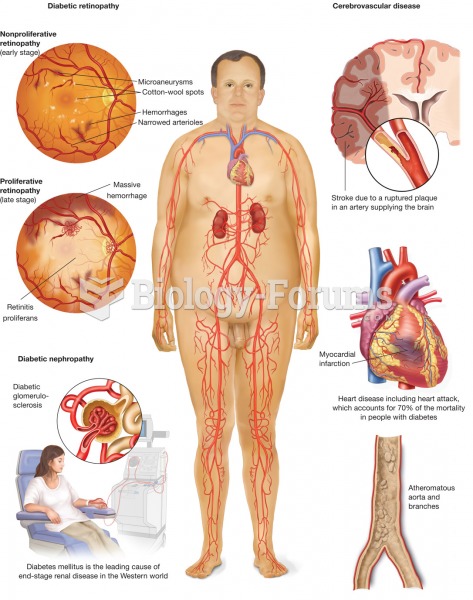|
|
|
For pediatric patients, intravenous fluids are the most commonly cited products involved in medication errors that are reported to the USP.
Malaria mortality rates are falling. Increased malaria prevention and control measures have greatly improved these rates. Since 2000, malaria mortality rates have fallen globally by 60% among all age groups, and by 65% among children under age 5.
More than 34,000 trademarked medication names and more than 10,000 generic medication names are in use in the United States.
Adults are resistant to the bacterium that causes Botulism. These bacteria thrive in honey – therefore, honey should never be given to infants since their immune systems are not yet resistant.
Vaccines prevent between 2.5 and 4 million deaths every year.
 Clockwise from above left: Green turtle (Chelonia mydas), Tuatara (Sphenodon punctatus), Nile Crocod
Clockwise from above left: Green turtle (Chelonia mydas), Tuatara (Sphenodon punctatus), Nile Crocod
 Diabetes mellitus. The metabolic disease diabetes mellitus, with symptoms of polydipsia, polyuria, a
Diabetes mellitus. The metabolic disease diabetes mellitus, with symptoms of polydipsia, polyuria, a




